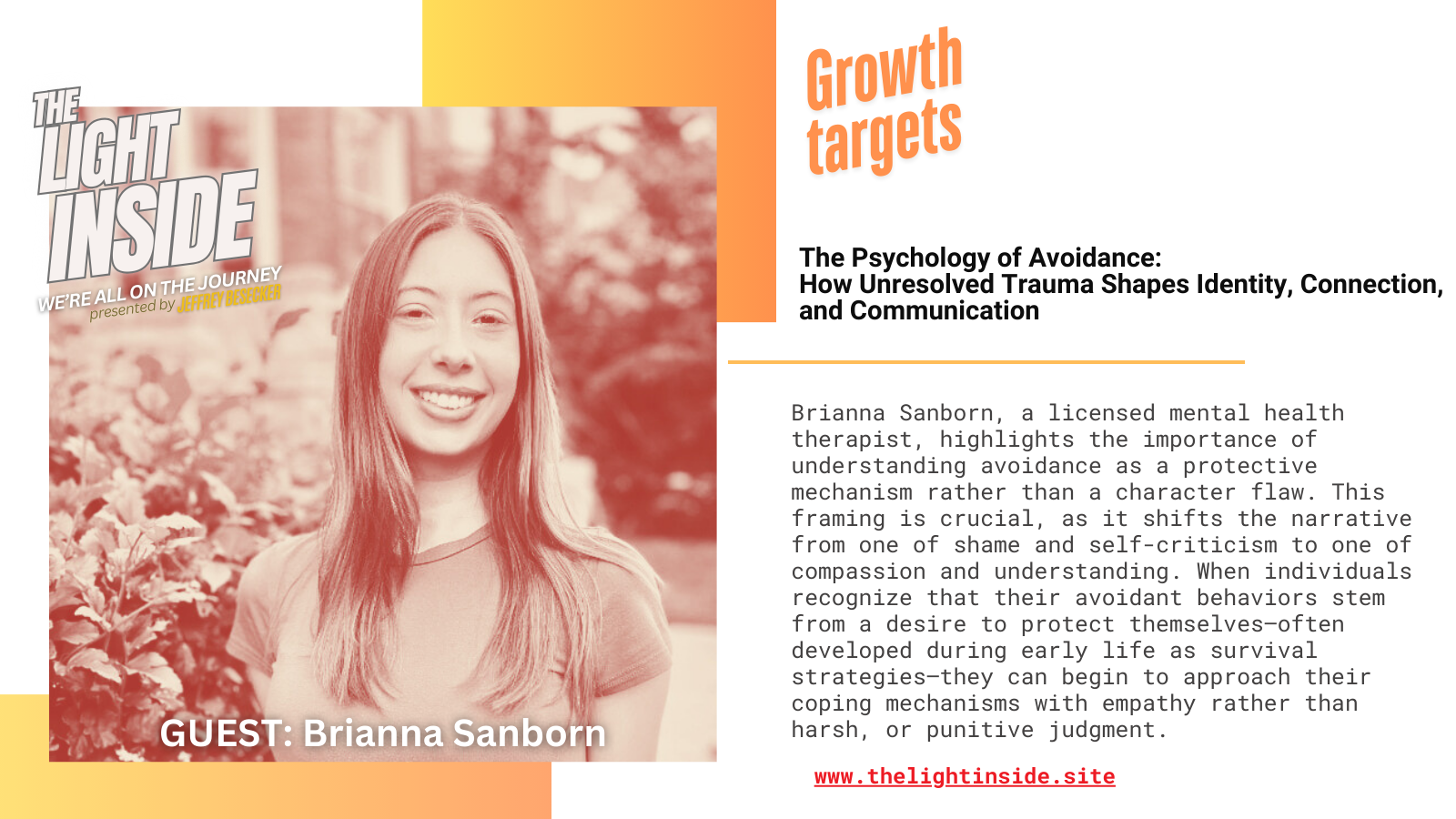The Psychology of Avoidance: How Unresolved Trauma Shapes Identity, Connection, and Communication

“When we sidestep hard conversations or carefully curate how we appear online, are we truly protecting our well-being—or safeguarding an identity that fears being fully seen?”
For instance, We leave the message unanswered, push aside the hope of self-reflection, and mask our discomfort with subtle devaluation—yet each act of avoidance is less about indifference and more about protecting a part of ourselves that still feels unsafe.
When we ignore the message, postpone the hope of reflection, or lean into devaluation in conversation, we are often responding not from indifference, but from unresolved psychological data still echoing beneath the surface. These responses are rarely conscious choices; they are protective mechanisms shaped by primary patterns such as early trauma-imprinted safety conditioning, where withdrawal or invisibility once ensured survival.
Over time, these patterns become reinforced by secondary mechanisms—conflict-avoidant communication, compulsive perfectionism, or self-silencing—that normalize disengagement as the “safer” option. What feels like avoidance in the present is often the nervous system unconsciously replaying old narratives of danger, rejection, or inadequacy, creating a cycle where connection feels threatening and distancing becomes the default. By recognizing the deeper drivers of these protective responses, we open the door to compassionate awareness and the possibility of more adaptive, transformative engagement.
Avoidance as a Protective Strategy
In the complex landscape of human emotions and behaviors, avoidance often emerges as a prominent coping mechanism. As discussed in the podcast "The Light Inside" with host Jeffrey Besecker and guest Brianna Sanborn, avoidance is not merely a passive response to discomfort; it is a protective strategy deeply rooted in our evolutionary survival instincts. This essay delves into the nature of avoidance, its psychological implications, and the transformative potential of confronting what we often seek to evade.
Let’s explore how avoidance, while rooted in our instinct to protect, can quietly shape our relationships, self-concept, and capacity for authentic connection.
Understanding Avoidance
At its core, avoidance is a behavior that individuals employ to sidestep uncomfortable emotions, challenging conversations, or situations that provoke anxiety. It manifests in various forms, such as non-productive procrastination, distraction, denial, or deflection. While these behaviors may provide immediate relief from distress, they often lead to long-term consequences, including unresolved trauma, impaired emotional regulation, and a diminished sense of self-awareness.
Brianna Sanborn, a licensed mental health therapist, highlights the importance of understanding avoidance as a protective mechanism rather than a character flaw. This framing is crucial, as it shifts the narrative from one of shame and self-criticism to one of compassion and understanding. When individuals recognize that their avoidant behaviors stem from a desire to protect themselves—often developed during early life as survival strategies—they can begin to approach their coping mechanisms with empathy rather than harsh, or punitive judgment.
Navigating Judgement: Balancing Critical Thinking and Compassion
Judgement is an essential fact of human life—before you judge that statement—hear me out.
How can we differentiate between the kind of judgement that helps us make informed decisions and grow, versus the kind that limits understanding and harms relationships?
A life free of judgement can lead to impudence by removing the critical filters that help us discern respectful behavior from overconfidence and rudeness. Without evaluative standards, individuals may act with unchecked boldness, disregarding beneficial social norms and healthy, adaptive boundaries.
This lack of self-reflection and objective feedback can result in actions that are perceived as impertinent or even offensive, ultimately undermining mutual respect and healthy interpersonal relationships.
From a purely aesthetic and rhetorical standpoint—who among us has not judged or been judged?
Judgement and discernment are essential for decision-making, learning, and social navigation.
There are different types: cognitive evaluation (assessing facts), moral judgement (evaluating right and wrong), and aesthetic judgement (personal preferences).
Ranging from ‘you can go f?&@ yourself’ to ‘I believe with a little self-acceptance and grace, you can achieve most things’ (Achieving ‘anything’ might risk existential over-reach—considering logical evaluation.)
Yes, dear readers—weighing calculate risk and losses—the statement bears judgements itself.
Harmful judgements include harsh admonishments, which discourage growth and create resentment, and biased judgements, which lead to unfair assumptions and discrimination.
Beneficial judgements involve objective feedback, offering clear, fact-based insights for improvement, and adaptive reasoning, allowing beliefs to evolve with new evidence.
Constructive judgement fosters learning and positive relationships, while rigid or punitive judgement can damage personal and social well-being.
Not all judgements are the same, as we can clearly see—with a little judgement and discernment.
Judgement and discernment are essential to human existence because they enable us to navigate complex social and physical environments, make decisions, and learn from experience. Here are some key distinctions and considerations:
- Types of Judgement:
- Cognitive Evaluation: This involves processing sensory data and information to form conclusions about our environment (e.g., determining if a surface is safe to walk on).
- Moral and Ethical Judgement: These are evaluations of behavior or actions based on societal or personal values (e.g., distinguishing between right and wrong).
- Aesthetic or Subjective Judgement: This pertains to personal tastes and preferences (e.g., judging art or music).
- Harmful Judgements:
- Harsh or Punitive Admonishments: When judgement becomes overly punitive or inflexible, it can lead to emotional harm or social alienation. For instance, excessively harsh criticism without constructive feedback may discourage personal growth and foster resentment.
- Biased or Prejudicial Judgements: These arise from stereotypes or unfounded assumptions rather than objective analysis, potentially leading to discrimination or unjust outcomes.
- Beneficial Judgements:
- Objective Feedback: Judgements based on clear evidence and logical reasoning tend to be more reliable. For example, feedback in professional or academic settings that is specific, fact-based, and balanced helps individuals improve.
- Adaptive and Flexible Reasoning: When judgements are open to revision in light of new evidence, they support learning and resilience. This flexibility allows individuals to update their beliefs and actions, fostering personal growth and innovation.
While human life demands the use of judgement in varied forms, discerning which judgements are constructive and which are harmful is critical.
Sound, objective feedback and a willingness to reassess our conclusions lead to better decision-making and healthier interpersonal relationships, whereas rigid or overly harsh judgments can hinder progress and damage social cohesion.
As an axiom: Kind judgement is the kind of judgement that bears kind returns in kind.
The statement "Kind judgement is the kind of judgement that bears kind returns in kind" posits a direct, almost mechanistic relationship between giving kind judgement and receiving kindness in return.
Seems emotionally and logically sound.
However, this notion implies that kind actions set off a predictable chain of reciprocal kindness, which simplifies the complexity of human interactions.
Accuracy and Limitations:
While the sentiment reflects an ideal of moral reciprocity, it overgeneralizes by assuming that every act of kind judgement will invariably lead to kind responses.
In reality, responses to kind actions depend on a myriad of factors—including context, individual differences, and situational dynamics—that the statement overlooks. Thus, its accuracy is limited by an overly deterministic view of social behavior.
False Dichotomy:
The statement also presents a false dichotomy by implying that judgement and returns are strictly either kind or unkind. It disregards the possibility of neutral or mixed responses and oversimplifies the spectrum of human emotional and social reactions into two rigid categories. In doing so, it creates an either/or scenario that neglects the nuance and variability inherent in interpersonal exchanges.
In sum, while this statement champions a noble ideal of reciprocal kindness, it does so by employing a simplified, binary framework that does not fully capture the complex and often unpredictable nature of human responses.
By all means, be judicious in your judgements. They help us make better, informed choices and decisions.
Are you open to feedback? I’d love to hear your thoughts on how you interpret it.
The Role of Dissonance
Central to the discussion of avoidance is the concept of dissonance, which refers to the internal conflict between one's conscious self-image and the unresolved psychological data that lurks beneath the surface. This dissonance can create a barrier that complicates emotional attunement and connection with oneself and others. As Sanborn notes, when individuals experience a gap between who they want to be and how they actually behave—often driven by avoidant strategies—shame and frustration can arise.
This dissonance is not merely a psychological phenomenon; it has real-world implications for relationships and personal growth. Avoidance disrupts authentic connection, making it more challenging for individuals to express their needs and emotions. As a result, the very strategies that were designed to protect them can lead to isolation and further emotional turmoil.
Compassion and Healing
The path to healing begins with acknowledging avoidance as a natural response to perceived threats. By meeting oneself with compassion, individuals can create a safe space for exploration and understanding. Sanborn emphasizes that recognizing the protective nature of avoidance allows individuals to validate their experiences rather than condemn them. This shift in perspective is essential for fostering emotional attunement and promoting healthier coping strategies.
Moreover, confronting avoidance can be transformative. While facing uncomfortable emotions and situations may initially feel overwhelming, it is often through this confrontation that individuals can achieve profound personal growth. By gradually exposing themselves to what they have long avoided, individuals can dismantle the barriers that hinder their emotional well-being and cultivate a deeper connection with themselves and others.
Strategies for Confrontation
To gently confront avoidance without succumbing to overwhelm, individuals can employ various strategies. These may include mindfulness practices, journaling, or seeking support from mental health professionals. Engaging in open and honest conversations with trusted individuals can also facilitate the exploration of avoidant patterns, allowing for shared understanding and support.
Additionally, fostering emotional literacy—understanding and articulating one's feelings—can empower individuals to navigate their emotional landscape more effectively. As Sanborn suggests, developing emotional and somatic language can enhance self-awareness and promote healthier interactions with others.
Conclusion
In conclusion, avoidance serves as a protective strategy rooted in our instinctual desire for safety and survival. While it can provide temporary relief from discomfort, it often leads to deeper emotional challenges and relational difficulties. By reframing avoidance as a natural response and approaching it with compassion, individuals can begin to dismantle the barriers that hinder their emotional growth. Confronting what we have long avoided is undoubtedly challenging, but it is also a transformative journey toward self-discovery and authentic connection. Through understanding, empathy, and practical strategies, we can navigate the complexities of our emotional lives and foster a deeper sense of agency and fulfillment.
Building Emotional and Somatic Language: Learning to Understand Your Body and Feelings
In this course, Brianna guides you in identifying the emotional and somatic language that bridges your inner experience with clearer self-understanding. You’ll discover how emotions first surface in the body, why they can feel confusing without words to name them, and how to communicate your feelings more effectively with yourself and others. With practical tools for recognition, regulation, and safe exploration, this course helps transform overwhelming sensations into empowering clarity. Note: Some exercises may stir strong emotions—practice at your own pace and lean on support if needed.



